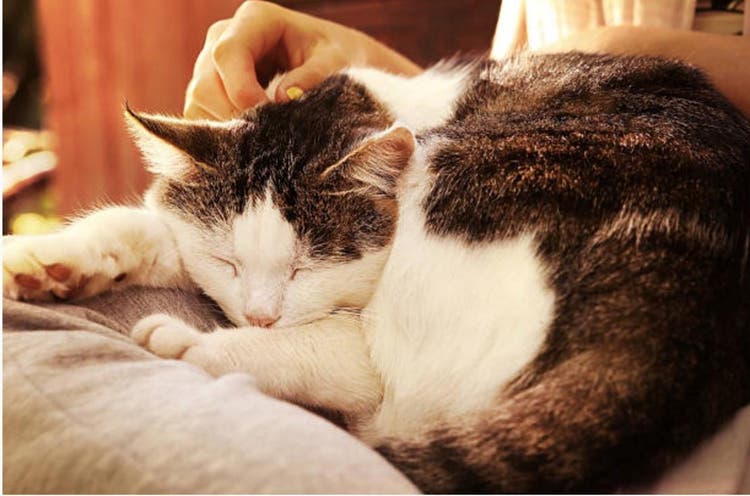Reviewed by Dr Abbie Lam DVM
Approaching and caring for a stray cat can be difficult and may put your other pets at risk if they come into contact without supervision and planning. Here’s what you need to know about interacting with a stray cat roaming your neighbourhood.
Can you tame a stray cat?
It can be challenging to tame a stray cat, but with time and commitment (and lots of food!), the cat may become more relaxed and friendly. It can be difficult to differentiate between a stray cat and a feral cat as well, as both have a significant population in Australia. Learn how to tell the difference between a feral cat and a stray, the risks feral cats pose to humans and domesticated pets, and how you can help your community.
Feral cats are a major problem in Australia
It’s estimated that feral cats kill 75 million native animals every night across Australia, including birds, frogs, small mammals, and reptiles.
By taking actions such as ensuring your own cats are desexed and confining them within your property, you can contribute significantly to mitigating this issue. This prevents the possibility of your cats mating with feral cats, thereby curbing the expansion of the feral population. Several Australian states and many local councils have already made it mandatory for owners to have their cats desexed and keep their cats indoors, especially at night.
How is a feral cat different from a stray cat?
The main difference between stray cats and feral cats lies in their level of socialisation with human beings. A stray cat has usually been abandoned by or separated from its owners. These strays may now be living outside on their own; but they have been socialised and had a home with humans before.
Like stray cats, feral cats also live outdoors on their own, but the key difference is that they have never been socialised and are therefore likely to be the offsprings of stray or feral cats. The absence of socialisation can lead feral cats to be untamed and difficult to approach.
Feral and stray cats typically behave differently when humans are nearby:
Feral cats | Stray cats |
Will generally avoid humans | Might approach humans |
Can appear frightened or hesitant around humans
Will take a protective stance: staying low to the ground and crouching | Might be friendly or curious around humans |
Little to no eye contact, no purring or meowing around humans | Likely to behave like a house cat: meowing and making eye contact around humans |
Both strays and feral cats can be loners or part of a colony, and they will hunt or take food wherever they can – whether it’s from garbage cans or your pet’s outdoor feeding station.
Can a feral cat become a house pet?
You may have a chance of taming or domesticating a stray or even feral kitten that is only a few weeks old. However, generally it is not advisable to tame a feral cat, and it is usually very difficult to tame an adult one. Feral cats are not used to human contact, and it’s likely they’ll never be as docile and friendly as a domesticated cat.
A feral cat will probably never wish to move into your home permanently, but eventually they may become confident enough to sleep in a less-confined space like a garage, shed, outhouse or utility room with easy access. Cats can’t resist a bit of comfort, especially if it’s cold outside, so if you would like to provide them warmth and shelter during harsh weather conditions, you can put down some bedding in a protected spot.
On the plus side, feral cats can be skilled at catching mice and other vermin and require minimal interaction from humans. However, if you choose to start feeding a feral cat, then effectively you are agreeing to take full responsibility for them, as they now rely on you for food and water. This responsibility includes keeping them free of intestinal worms, fleas, ticks and heartworm, as well as giving them veterinary care. Of course, this also means you would have to be able to physically handle the cat, so this is a decision that should be carefully considered.
Do stray or feral cats pose health risks to you or your pets?
It is not common for humans to catch diseases from stray or feral cats since they don’t often come in physical contact. If you receive a scratch or a bite from a feral cat, it is imperative to seek prompt medical attention as serious health complications may arise. If you accidentally touch feral cat faeces, wash your hands well and contact your health professional for further advice.
Since stray and feral cats can carry diseases, worms and fleas, it is possible for them to pass infections on to your domesticated pets, especially if they got into a fight that resulted in open wounds, which will require veterinary attention. If you already have a cat or dog, the presence of a stray or feral cat may cause issues if not handled properly. Your pet may experience distress due to visits by feral cats, leading to potential conflicts where the feral cat may exhibit aggressive behaviour your pet, or vice versa. If this is the case, your pets and the feral cat may need to be kept apart. Ask your local council ranger for assistance in trapping, desexing and possible relocation of the cat.
How can you help feral cats?
The first step is to inform your local council or cat rescue. They will offer advice and may visit your area to locate the cats. To help determine if it is a lost stray or a feral cat, they will scan them for a microchip. Owners will be contacted if their contact information is accessible on the national pet microchip database. If no microchip is detected, they will likely take the cats to their rescue centre or the local pound for health assessment. If you’d like a cat to be part of your household, there are plenty of cats in shelters and rescues that need a warm, welcoming home. For advice on adopting a rescue cat, read our complete guide.



